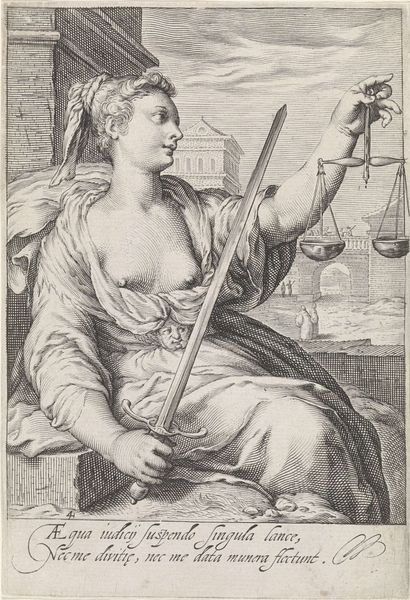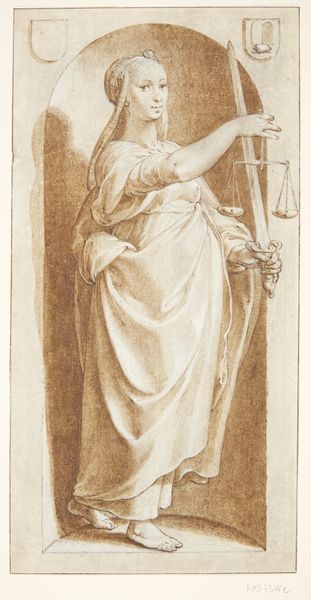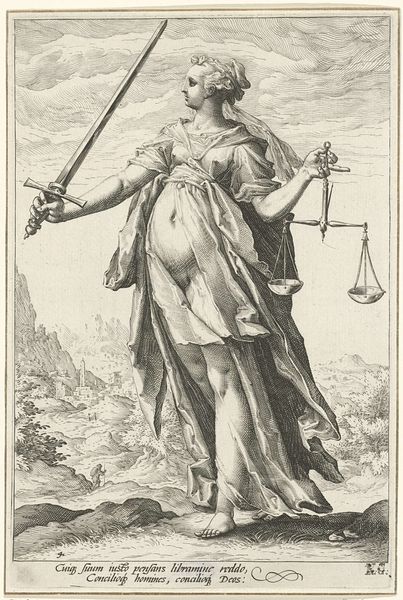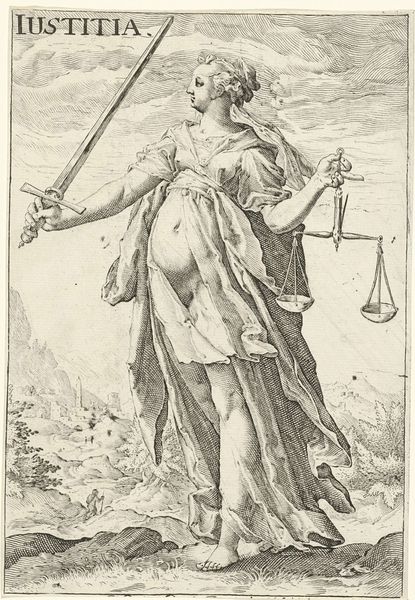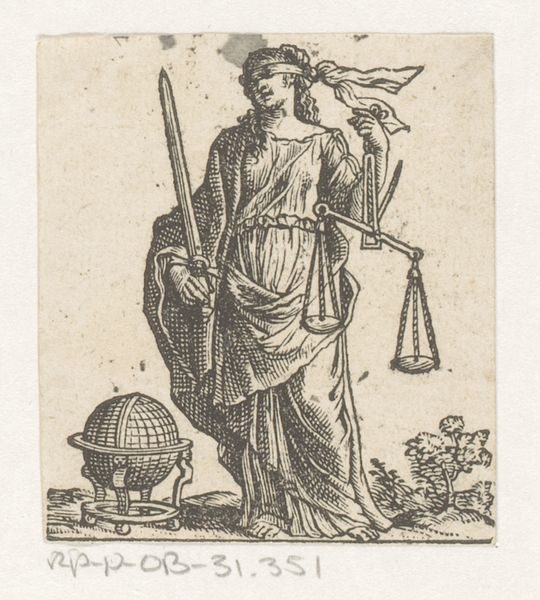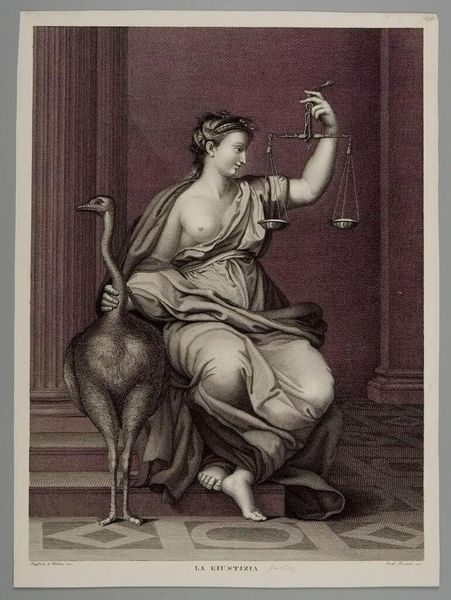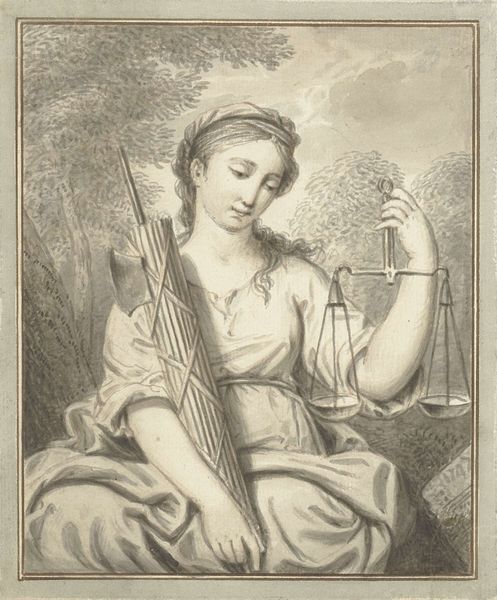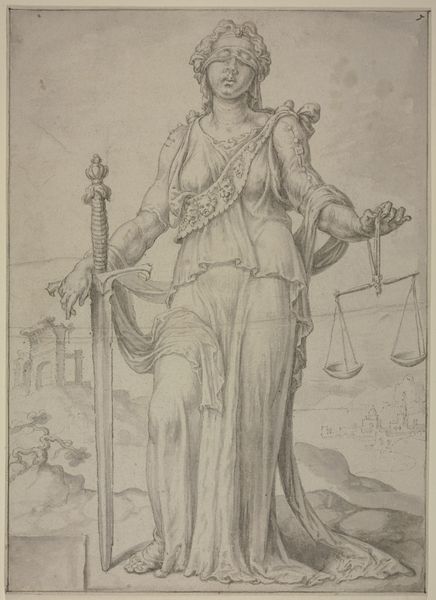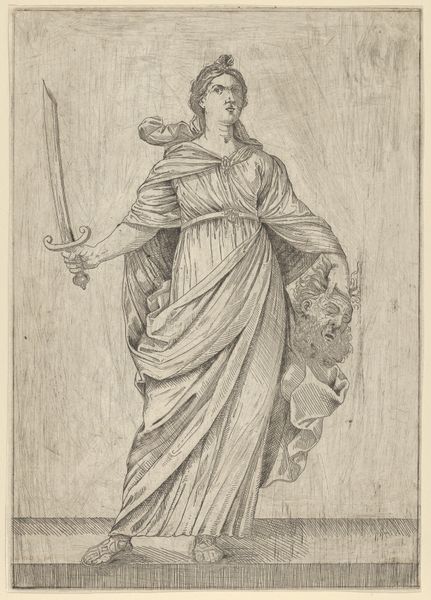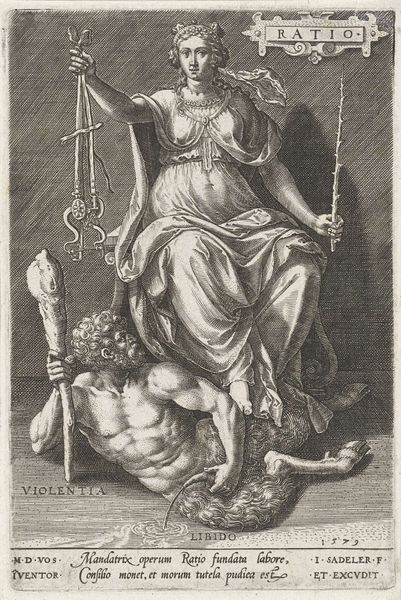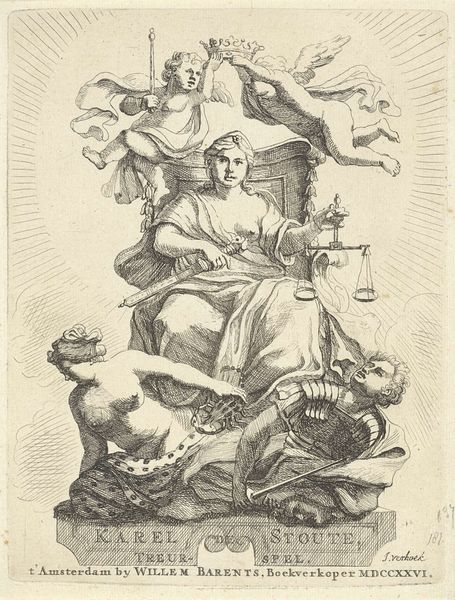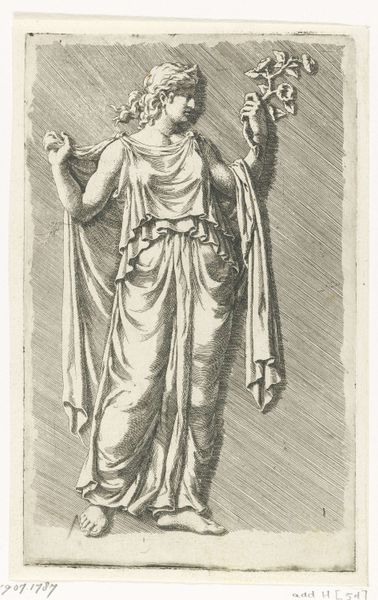
print, engraving
#
allegory
#
baroque
# print
#
old engraving style
#
figuration
#
line
#
history-painting
#
engraving
#
realism
Dimensions: height 325 mm, width 168 mm
Copyright: Rijks Museum: Open Domain
Curator: This is Rechtvaardigheid, or Justitia, an engraving created in 1593 by Jacob Matham, housed here at the Rijksmuseum. Editor: There’s a coolness to the rendering. The grayness makes it solemn, like an unapproachable monument, despite being just a print. Curator: That solemnity comes through Matham’s meticulous line work. Notice the precise detailing in the drapery, the delicate rendering of the scales of justice and even the texture implied in the sword's handle. The symbol of justice itself predates this, originating with the Roman goddess Justitia; scales represent impartiality, the sword stands for power, and her blindfold usually symbolizes objectivity. Editor: But look at her eyes, uncovered. In our present political climate, her gaze and lack of blindfold feel like an active choice. Justice shouldn't be blind; rather, it needs open eyes, engaged to consider power dynamics, gender, race. Curator: An intriguing reinterpretation, I agree. The traditional iconography emphasizes that justice should be administered without fear or favor, impartially. However, given that the artwork's patron remains unknown, assigning intention requires careful consideration. What historical context are you emphasizing? Editor: Well, Matham lived during a period of significant upheaval—the Dutch Revolt, the rise of mercantile power. Justice became essential for creating a society governed by law. That period's philosophical concerns connect with present-day arguments about fair and transparent governments. Curator: Symbolically speaking, the coats of arms above her depict worldly power, indicating her independence, and therefore higher divine authority. Editor: While it seems timeless, there's something uniquely Renaissance about this visualization of justice. Justice becomes a humanist project and is, thus, connected to that period's intellectual climate. How potent that we still use the same image in so many different contexts. Curator: Yes, contemplating Matham's "Justitia" brings historical continuities and contemporary needs of justice into sharper focus. Editor: Absolutely, these are ongoing dialogues on what equitable systems are. It has definitely sparked a lot of thoughts.
Comments
No comments
Be the first to comment and join the conversation on the ultimate creative platform.
